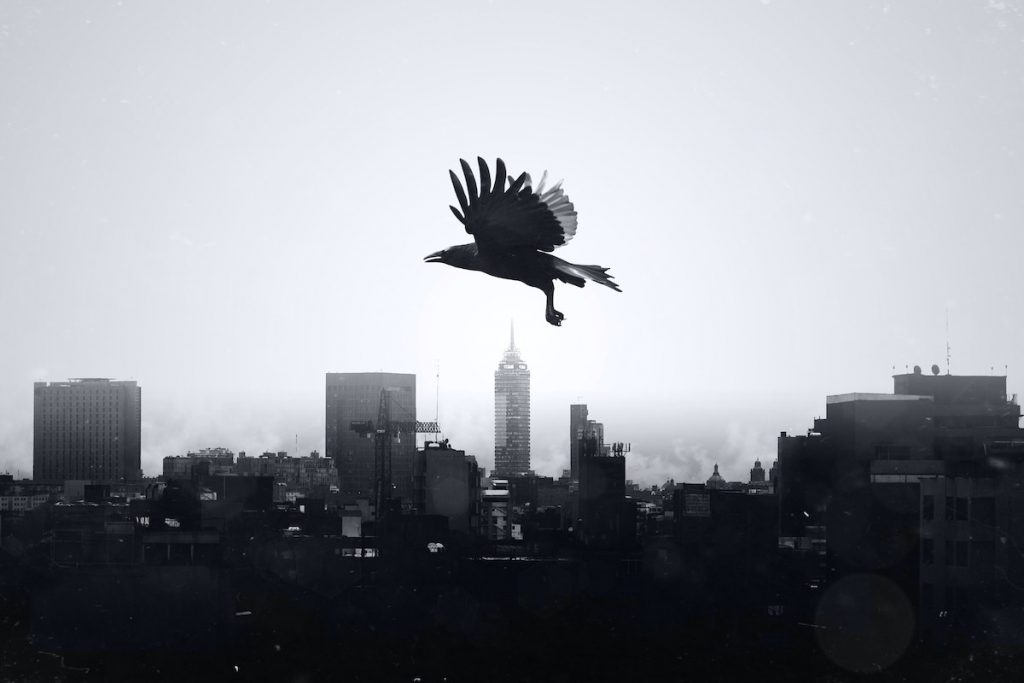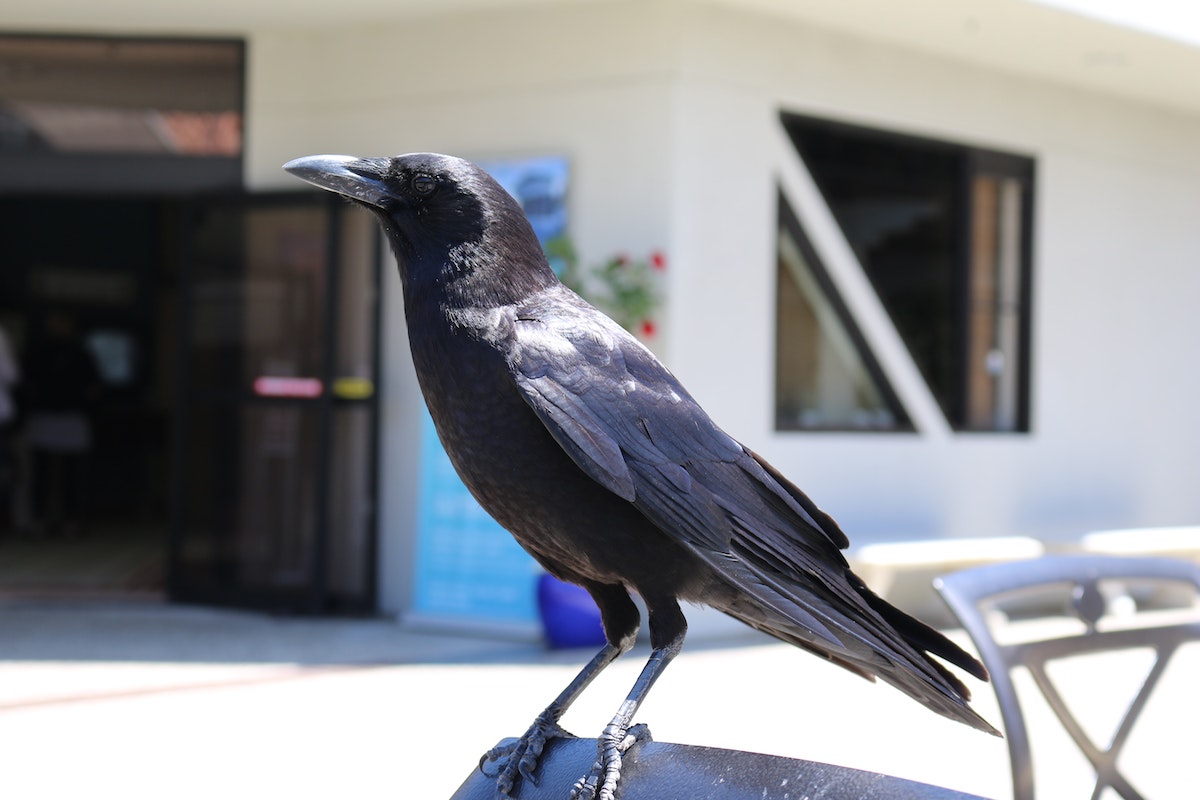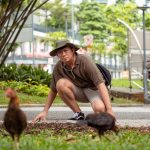Top image: Nixon Flores / Unsplash
Life has come full circle and I’ve been forced to editorially confront one of my many fears: Crows.
As an unsuspecting 6-year-old, my parents brought me to Hougang Park after much persuasion on my end. Several re-runs of Tarzan on the Disney Channel had me convinced that I too wanted to be one with nature.
ADVERTISEMENT
That era ended as soon as it began when a crow, perched on a nearby tree branch, flew a little too close for comfort. I wasn’t the target; it was probably flying somewhere else. My parents weren’t too concerned.
In my eyes, though, I had just survived a crow attack and I wanted to go home. Disney movies lied to me—wild animals don’t break out in song, and they certainly don’t make friends with humans.
Turns out that I’m not the only one with slight ornithophobia, even in an office as small as RICE’s. My colleague, Eve, shares that she was once stepped on by a swooping crow while walking around her Tampines neighbourhood.
I’m glad she’s alive.
Decades after my feathery encounter, the fear returned with vengeance. In Bishan earlier this week, there was a striking parallel to Alfred Hitchcock’s The Birds. Several pedestrians have been attacked by crows near Block 110 Bishan Street 12.
Shin Min Daily News reported that the Bishan crows attacked 10 people in a span of 20 minutes—an admirable hit rate. The National Parks Board and Bishan-Toa Payoh Council responded by removing crow nests, pruning trees, and setting up traps for crows—trapped crows will be euthanised.
On Friday morning, another crow attack took place closer to my residence: Hougang Avenue 8. Lianhe Zaobao reported that a mother had her head pecked by a swooping crow while walking home. A minimart owner noted that crows have been conducting bombing runs on a few women in the last week alone.
Although I’ve carried this fear of crows for much of my life, it’s disheartening to know that the Bishan crows will meet their end for just being wild animals. After all, crows are intensely intelligent animals.
The Bishan crows were only protecting their nests and their offspring—understandable for any creature. While they now face habitat removal, the humble crow deserves its time in the spotlight, albeit from afar. And definitely not anywhere near Block 110 along Bishan Street 12 nor Block 524 Hougang Avenue 8.
A Crow Remembers
A crow’s most striking feature is its memory. It’s the one fact which comes to mind when people think about these birds. Wildlife biologists discovered this fact by using rubber masks to test their memory—a “dangerous” caveman mask and a “neutral” mask.
Researchers with the “dangerous” masks trapped individual crows in the wild. These crows were eventually released. When researchers returned to the area, wearing either a “dangerous” or “neutral” mask, crows would alert their fellow feathered friends.
Interestingly, the crows, even ones who had not encountered the masks before, started harassing the scientists with the “dangerous” mask. The “neutral” face was largely ignored.
ADVERTISEMENT
The researchers concluded that the crows not only memorised the face of their attacker, but they also had a distinct way of communicating to tell their friends about it.
Even more disconcerting is that they remember faces for a long time.
The face of an unassuming Singaporean on their way to a hawker centre for lunch, if mistaken by crows as dangerous, has their fate sealed. That face is now etched in memory. And you can be sure, crows are describing what you look like to their friends. The minimart owner in Hougang even mentioned that the crows specifically pick out passers-by before launching their attacks.
A Murder of (Really Smart) Birds
Tools are commonly associated with primates. After the black monolith descends on a tribe of primitive apes in Stanley Kubrick’s 2001: A Space Odyssey, an ape discovers how to use a bone as a weapon.
Knowledge of how to wield a bone as a death-bringing club spreads; the tribe of apes which first discovered tools reign supreme.
Replace the tribe of apes with a murder of crows. And it would have been no different. Crows can use tools to solve problems as well. Thank the universe that they don’t have opposable thumbs.
Researchers once presented crows with a piece of meat tied to a string. The crows stood on the stick to keep it in place and tugged at the string. The piece of meat inched forward and the crow was eventually rewarded for its smarts.
An even more striking conclusion is that the crows solved the stick-and-meat problem spontaneously, merely reacting to external conditions for the reward. Most animals, however, cannot achieve the same feat. When it comes to solving problems spontaneously, other animals fall short. Not the crow.
In fact, I’m guessing the Bishan crows knew what they were doing when they swooped down to defend their nests. In pictures shared by Shin Min Daily News, the crows aimed at the heads of passers-by; their wings in full stretch, claws pointed at the poor human’s head.
Pedestrians can only duck and run away as quickly as they can. What’s the best way to drive a bunch of annoying human beings away from our homes? Fly at them at full speed. Spontaneous problem-solving. A life lesson we can all take away from these birds, and another reason not to mess with them.
Four Crows and a Funeral
Of course, it’s great that public authorities have acted so quickly to protect the eyes, faces, and hair of concerned citizens. How can Singapore be called a free country if its citizens are held hostage by a murder of aggressive crows?
ADVERTISEMENT
It’s understandable that the authorities have to take action—kids and seniors are at risk. Euthanising the crows, however, invokes a tinge of sadness. They’re living creatures after all. Just untamed.
What’s unfortunate is that the pack of crows will not have the opportunity to hold a funeral for their friends. Yes, a funeral.
However, “funerals” held by crows are not necessarily occasions to express grief over their lost friends. In fact, these funerals serve more pragmatic functions—after-action reviews to decide whether there’s a threat in the area to see if they can avoid it in the future. Very utilitarian of these animals, if you ask me.

Much to Crow About
While crows are considered an invasive species (they’ve practically conquered the globe), it doesn’t stop us from admiring their intelligence and resourcefulness. Take it from a crow-fearing citizen like myself.
Actually, if they weren’t protecting their young, crows can be friends, not enemies. A Singaporean TikToker has befriended one of them before. Ah Chiang the Crow flies into the apartment of a Singaporean and spends some time with them on a regular basis (crows also have a good memory for routes and directions).
Their interactions have since been documented online—videos of Ah Chiang resting in the apartment and being pet by its human friend have garnered over thirty thousand followers.
Sadly, the same fortune cannot be said of the crows in Bishan and Hougang that are about to be trapped. It’s necessary to remove the aggressive Bishan crows for the sake of public safety. Although I’m sure they’re only acting in a way most creatures (us included) would protect their young.
Much has been said about how Singaporeans should co-exist with their resident critters. Our status as a global green hub simultaneously calls for the acceptance of wildlife, while privileging some animals over others. Fundamentally, wildlife is only appreciated to the extent that it fits the image Singapore wants to project of itself—a clean, green, and (most importantly) safe global city.
From a safe distance, however, their intelligence leaves much to crow about.







